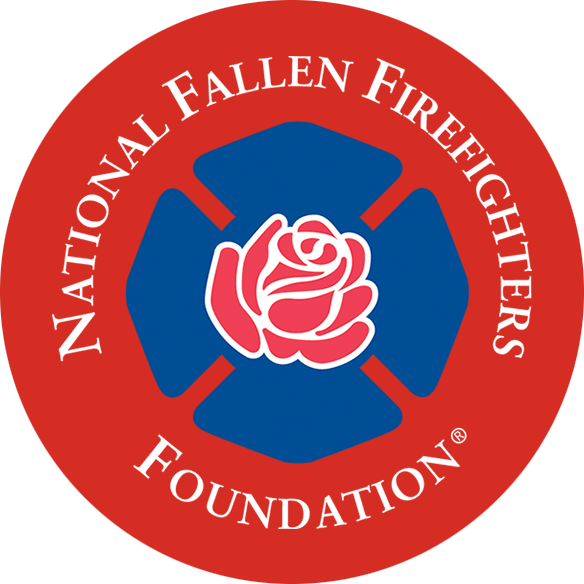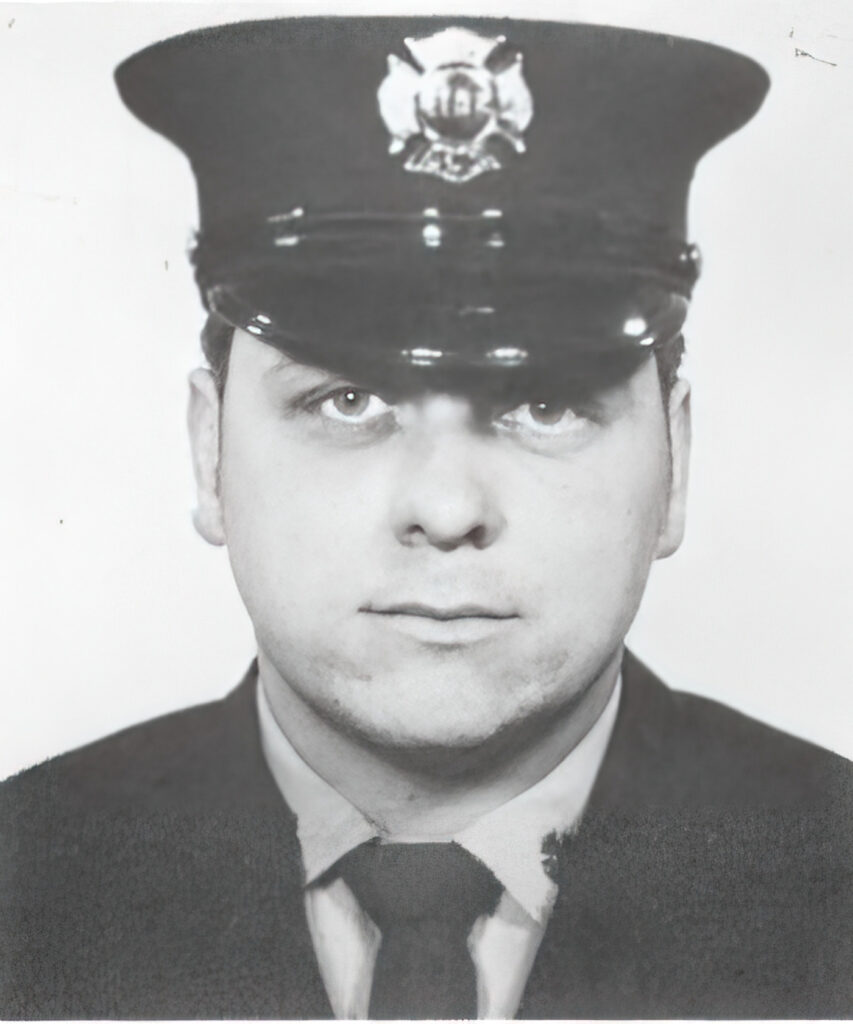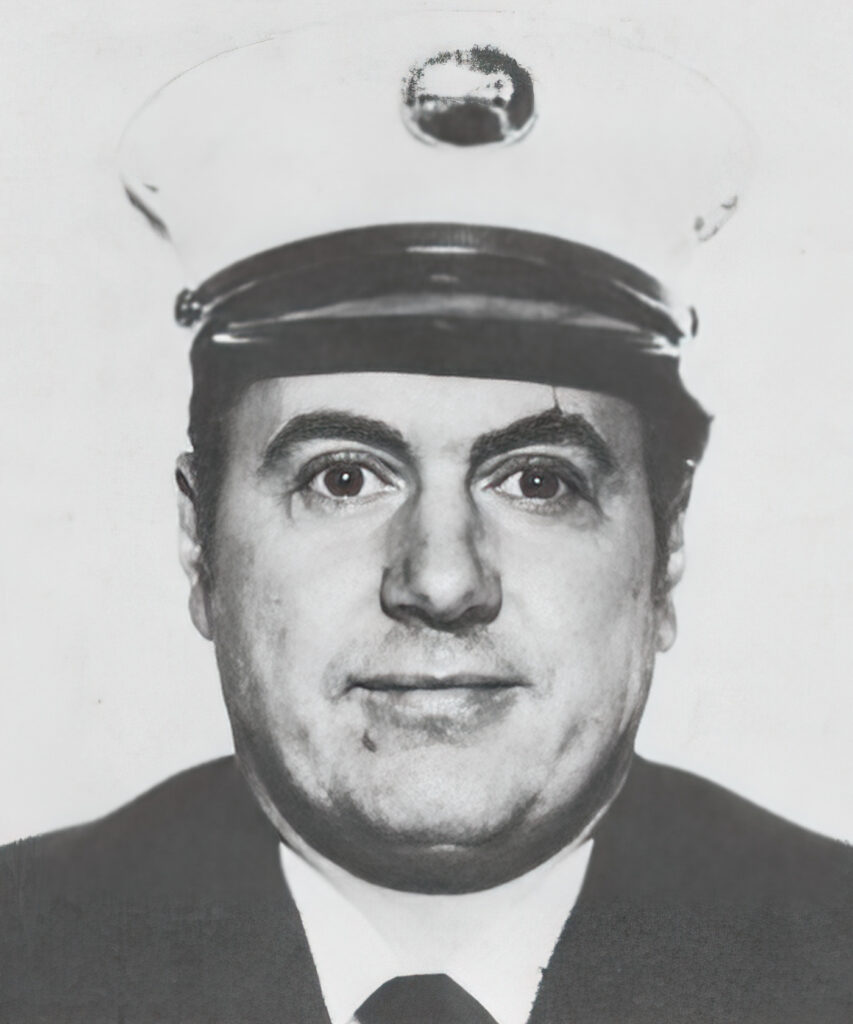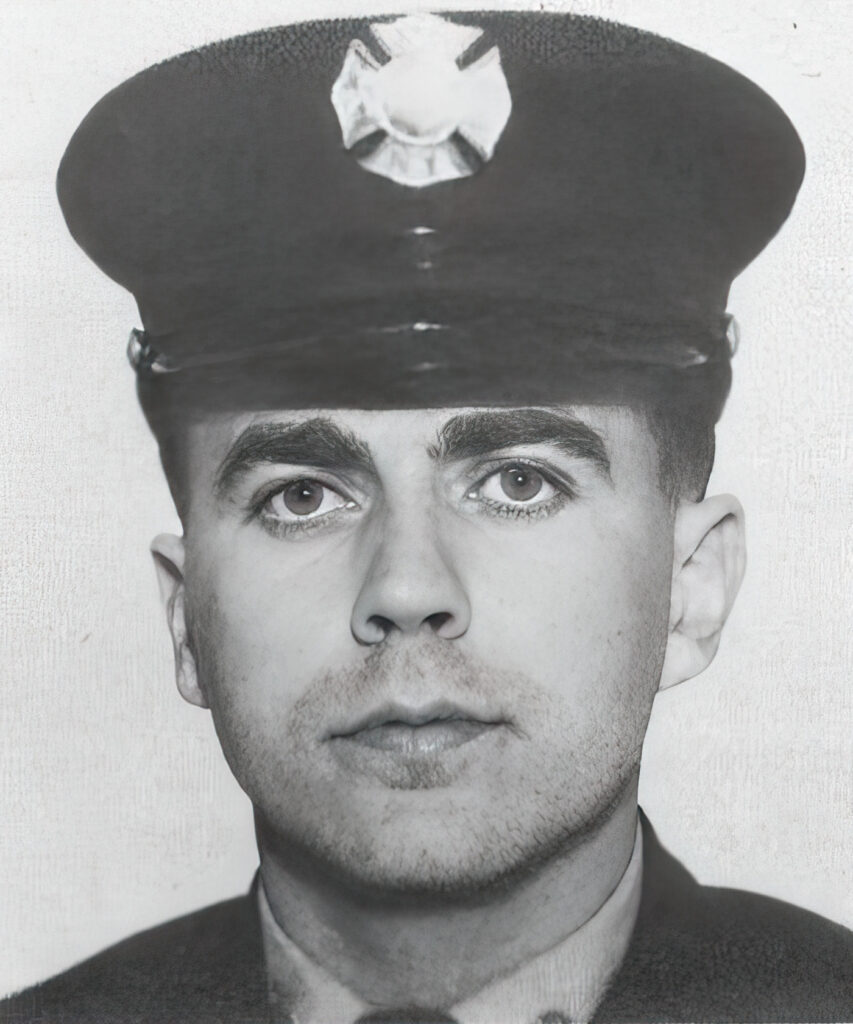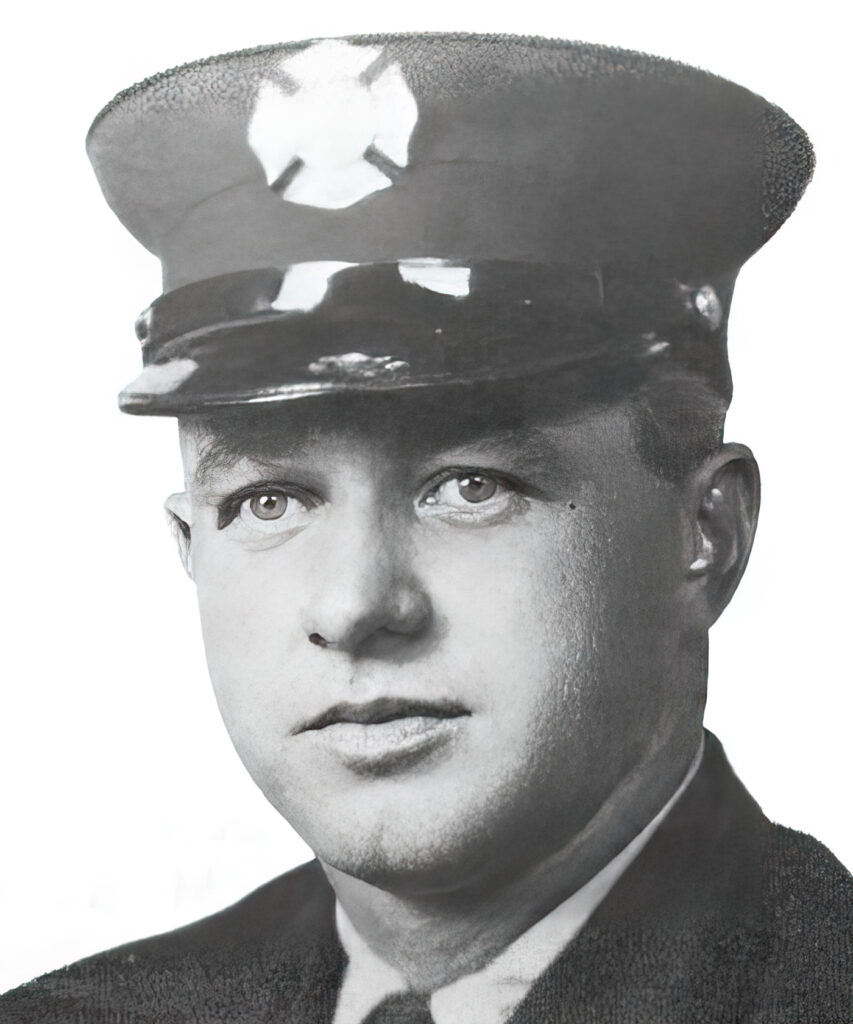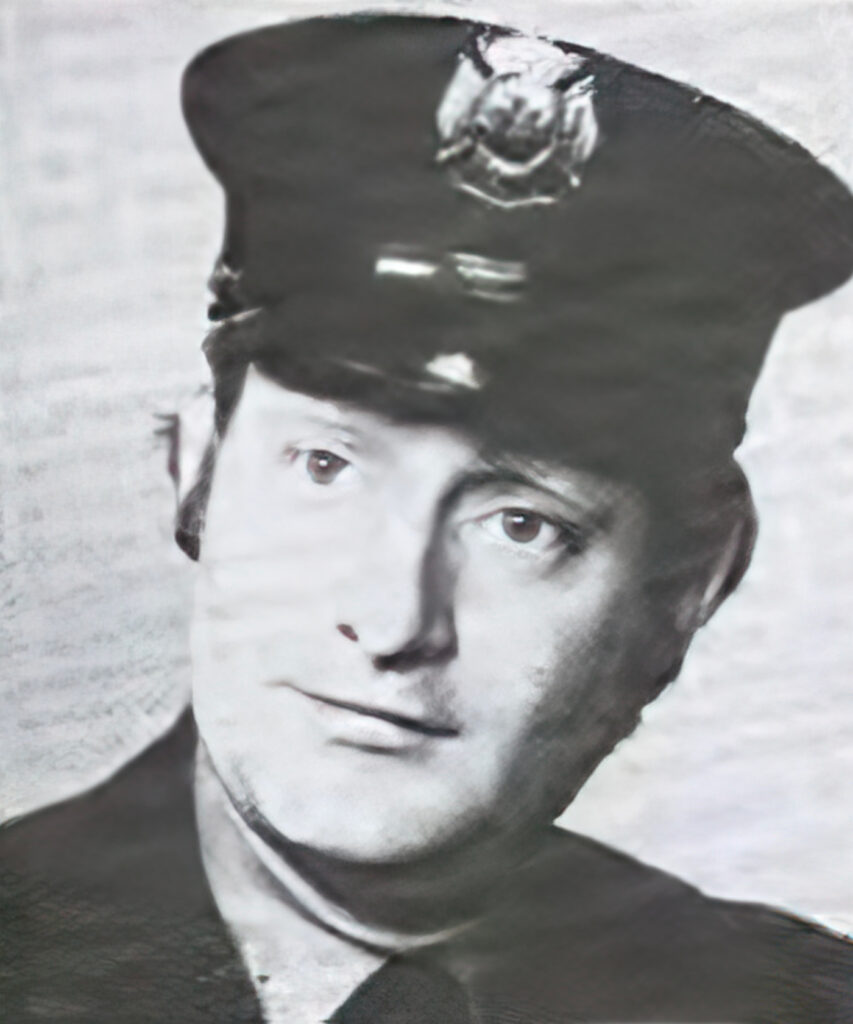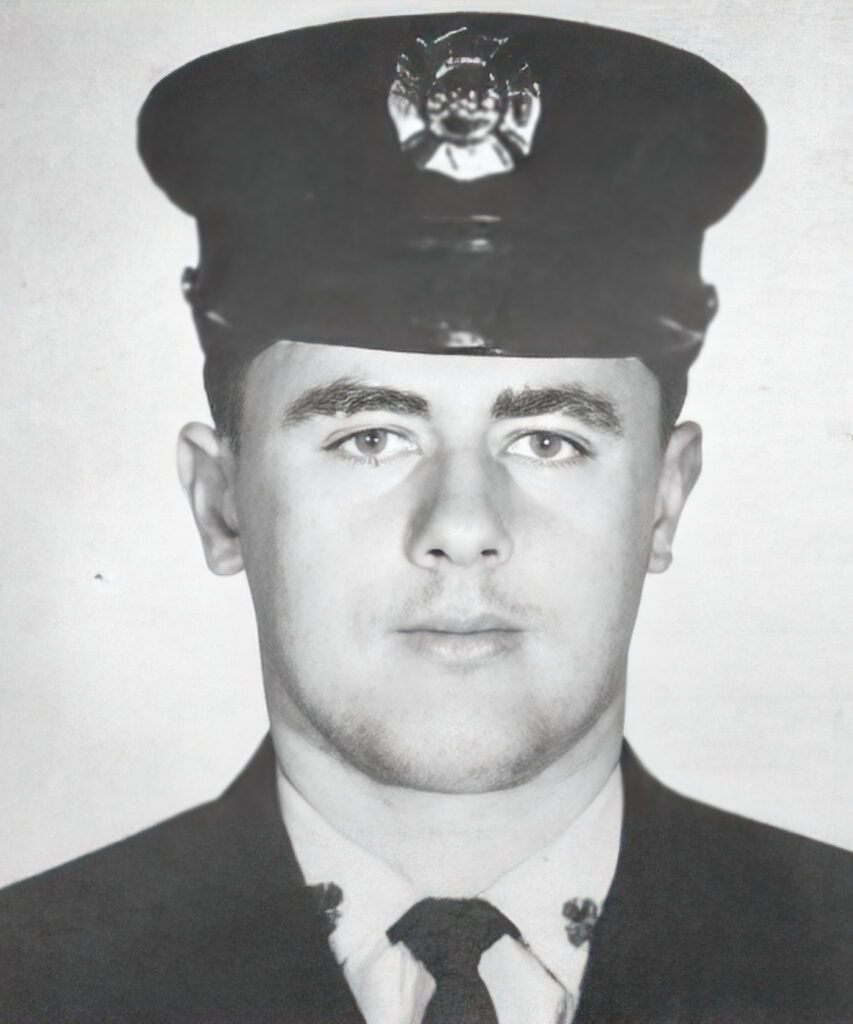Incident Date:
August 2, 1978
Departments:
Fire Department of the City of New York (FDNY)
Number of Line-of-Duty Deaths:
6
“Beware the truss.”
- Professor Francis L. Brannigan
The Waldbaum’s Supermarket
The Waldbaum’s supermarket was arranged like a standard grocery store; it was a 15,000 square foot building and featured a mezzanine level along the north wall for office space and the compressor for the air conditioning.
The roof of the store was constructed with a bow-string truss design. A bow-string truss roof is a type of roof structure that uses a curved, arch-like truss shaped like a bow. The truss typically consists of a curved top chord, a straight bottom chord, and a series of web members connecting the two. This design allows the roof to span large areas without needing interior columns or supports, making it popular for wide-open spaces like warehouses, supermarkets, and other large commercial buildings. However, bow-string truss roofs can be vulnerable in fires because the wooden components may weaken and collapse under heat, especially if the fire is intense or prolonged.
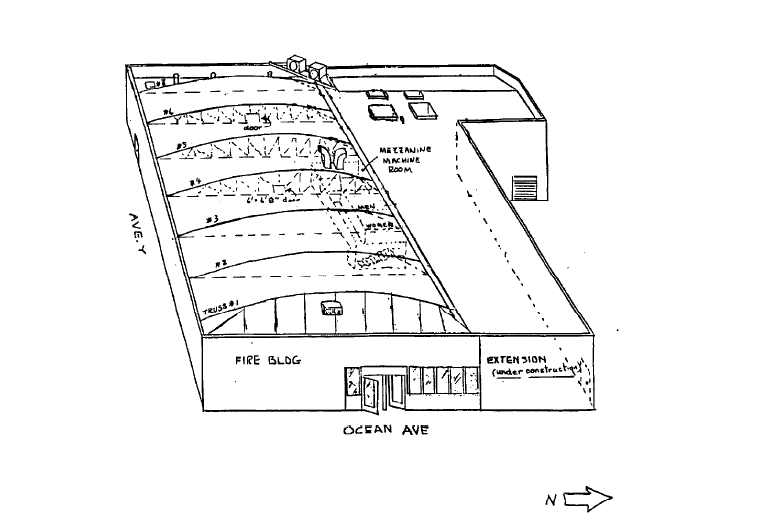
In addition to the bow-string truss roof, there was a rain roof to help with drainage on the older sagging roof. From the outside it was not obvious how many layers of roof there were.
Inside the building, there were two ceilings: a drop ceiling that concealed the original tin ceiling. The trusses in the mezzanine level were covered with sheet rock for a finished office space.
On the morning of Wednesday, August 2, 1978, a report of fire was received at 8:39 am for the Waldbaum’s supermarket at the intersection of Ocean Avenue and Avenue Y in the Sheepshead Bay section of Brooklyn. Engines 254 and 321, Ladders 153 and 156, and Battalion 33 responded on Box 3300 to a report of fire. As they were responding, the Brooklyn dispatcher escalated the assignment due to the high volume of calls coming in.
Business as Usual
When the fire broke out, the building was undergoing renovations to add an extension on its north side. Even though the store was under construction, it was still open for customers. That morning, there were 20 employees along with customers in the store at the time of the fire.
One person came down from the mezzanine level to announce that there was a fire upstairs, adding that everyone should get out. One of the cashiers used the intercom to alert customers to evacuate the store because there was a fire. Another cashier later reported that since there was no visible sign of fire, some of the patrons who were already in line decided that they would like to pay for their groceries before exiting the building.
Fire Timeline
8:45 am
Engine 254 Arrives
Engine 254 arrives at the scene and company officer Lt. Edward Smith sees fire on the roof on the north side of the building. He radios for the 10-75 bringing additional resources to the scene.
8:49 am
All-Hands Working
Battalion 33, Chief Arthur Clark signals the “All-hands” and later calls for an additional engine.
9:00 am
Division 12 Arrives
Division 12, Chief James O’Malley arrives on the scene and is briefed on the resources and assignments. He sends Chief Clark to command operations in the interior.
9:02 am
2nd Alarm
Chief O’Malley calls for the 2nd alarm.
9:10 am
Call for More Resources
Chief O’Malley calls for an additional engine and tower ladder.
9:16 am
Truss 5 Fails
Battalion Chief Clark heard a loud whooshing noise and then sees heavy fire inside the store. Clark orders the evacuation of the interior crews to regroup.
9:16 am
3rd Alarm
9:17 am
4th Alarm
Chief O’Malley then calls for the 4th alarm.
12:45 pm
Fire Under Control
The fire was declared under control.
Engine Companies
As Engine 254’s crew advanced their hoseline to the mezzanine level, they found light smoke and no visible fire. But they did report an intense heat as they directed their streams to the fire in the ceiling.
Engine Company 276 also arrived and deployed their hoseline to the north side of the building after initially seeing light smoke in the second-story extension. As they went to work, they encountered flames in the walls leading to the mezzanine level inside the main structure.
Ladder Companies
Ladder 153, the first-due ladder company, arrived and went to work clearing the way for Engine 254’s hoseline, beginning their searches, and opening up the ceilings.
The second-due ladder company, Ladder 156, arrived and went to work performing forcible entry while other members went to the roof It was discovered that the structure contained a secondary rain roof, which had been installed on top of the original roof.
Ladder 169 then reported to the roof and began cutting for ventilation. They reported that the rain roof was difficult to penetrate, but the roof appeared to be stable.
Ladder crews on the outside of the building opened up the roof hatches and cut through the center of the rain roof, only to find heavy smoke below. Because they could not reach the original roof below, they moved their cuts to the edges of the roof, which also showed heavy smoke. These conditions were drastically different than what firefighters inside the store were reporting.
Rescue Company
Rescue 2 responded on the 10-75 and went to work inside the store, with the exception of their roof man Firefighter Tom Vallebuona.
Opening up
Conditions inside began to improve with ventilation and knocking down the visible fire. On the inside of the store, members of Ladder 153 and Rescue 2 dropped the ceiling tiles so that they had better access to the fire above.
Roof and Interior Command
Battalion 42, Chief Peter Eisemann and his aid Firefighter Harold Hastings arrived on the scene and reported in. They were assigned to supervise the roof operations.
Chief Eismann directed that an additional hoseline be set up on the mezzanine level near the air conditioning unit. He reported that he had active fire threatening the wooden supports holding the air conditioning unit on the roof.
The Wave Goodbye
Eager to head to the shore, Louise O’Connor and her three children drove to the firehouse that morning to pick up their firefighter, Billy O’Connor, after his shift at Ladder 153. Upon arrival, they learned he was responding to a fire at Waldbaum’s Supermarket. They hurried to the scene and arrived just as Billy stepped onto the roof. He spotted them in the street below, waved, and then got to work. Tragically, the roof collapsed moments later, plunging Billy and several others into the inferno below.
“It just melted.”
One firefighter remarked that there was no telltale cracking noise, no rush of air, and no sound of any kind on the roof just before it collapsed.
There were 24 firefighters working on the roof when it buckled.
A half dozen firefighters fell to the ground inside the store and were seriously injured, including Firefighters Terrence Campbell (Ladder 156, detailed from Ladder 153); Donald King, Ladder 156; William Kelly, Engine 246, Tom Vallebuona, Rescue 2; and John Madigan and Probationary Firefighter Plaut, Ladder 169. Some had to break through the void space and untangle themselves from the conduit and cables that trapped them. Firefighter Vallebuona (Rescue 2 Roof) recalled falling first into the smoke-filled void space between the trusses and the tin ceiling, which then erupted into flames. He heard voices, crawled to an opening, and then fell down to ground level inside the store.
Six more firefighters were hung up in the truss area between trusses 4 and 6, and ultimately died from their injuries. These fallen firefighters included Lieutenant James E. Cutillo, Battalion 33 (working in Ladder 156); Firefighter Charles S. Bouton and Probationary Firefighter William O’Connor, Ladder 156; Firefighters James P. McManus and George Rice, Ladder 153; and Firefighter Harold F. Hastings, Battalion 42.
Looking for refuge, twelve other firefighters scattered to the perimeter of the roof. During this chaos, Chief Eismann protected escaping firefighters with Engine 254’s hoseline so they could reach the aerial ladder on the side of the building. Firefighter Pat Mahaney of Ladder 169 noticed that the roof below Chief Eismann was starting to give way. Mahaney shouted as he sprinted forward and caught Chief Eismann just before he fell.
Worsening Fire Conditions
Below, there was heavy fire. Timbers from the roof trusses were now falling into the store.
At the Command Post out front, Chief O’Malley saw a followed by members stumbling out of the building. In quick succession, he then called for the 3rd and the 4th alarms.
The Rescue and Recovery
Despite worsening conditions, firefighters kept calling out and searching for their trapped comrades inside the store. Chief O’Malley then ordered an evacuation to allow them to regroup. Shortly after the firefighters exited and began working from the front of the building, the remainder of the roof collapsed. Deputy Assistant Chief John Stancarone, who was in charge of the rescue efforts, initiated a roll call to account for all members and determine who was missing.
The truss hung precariously over the firefighters as they worked to get through to the front of the store. On the Avenue Y side of the building, firefighters from Rescue 2 and Ladder 161 used a battering ram to breach the wall closest to Truss 5. Rescues 1 and 3 firefighters arrived on the scene and relieved the crew from rescue, stepping into the breach to search for the trapped firefighters. First, they found a 6-foot hook, then a helmet in an aisle, which led them to two fallen members. Firefighter George Kreuscher of Rescue 1 started pulling down the ceiling around that area and they discovered 4 more fallen firefighters.
As a result of the fire, 25 firefighters, 1 EMT, and 1 Emergency Service Police Officer were injured. Seven were rushed to hospitals and 4 of them were in critical condition.
The Cause of the Fire
This fire was determined to be arson. Investigators believed that the fire had been set inside the void spaces with newspaper and a liquid accelerant.
Eric Jackson-Knight, 21, was later arrested and charged with arson and 6 counts of murder. He confessed that he and two other men set the fire around 6:00 am in exchange for $500. He was convicted and given a 25-year to life sentence and affirmed again in 1985 when the conviction was appealed.
In 1986, during preparation for a civil trial, it was discovered that there was evidence of an electrical failure, which had not been presented to the defense. As a result, Jackson-Knight was released in 1988.
After many legal delays, a retrial was pursued in the summer of 1994, but he was acquitted of all charges.
The Legacy of the Waldbaum’s Supermarket Fire
The Waldbaum’s Fire was the largest loss of firefighters in a single fire in Brooklyn and the deadliest fire since the 1966 blaze at 7 East 22nd Street, where 12 firefighters tragically lost their lives.
Brooklyn’s Waldbaum Supermarket Fire would leave an indelible mark on six families, the FDNY, the Sheepshead Bay community, and the American fire service. Six widows and 18 children were left grieving their firefighter. Numerous neighbors and friends were featured in local and national news, praising the qualities and heroism of each of the six fallen heroes.
Days later, thousands would attend funerals for the firefighters, which brought firefighters from up and down the east coast—and as far away as Chicago—to New York.
“The supermarket’s roof was not the first bowstring truss roof that collapsed in the 140-year history of the New York City Fire Department. After the Brooklyn supermarket collapse, chiefs, company officers, and firefighters came forward and related many past incidents of truss roof collapses... Today, the city provides training to FDNY chiefs through a chief officer’s development program. Chiefs attend conferences where they are encouraged to exchange information about firefighting strategy, tactics, and fireground safety and to discuss the latest life safety and fire protection innovations.”
- Chief Vincent Dunn, FDNY (Retired)
Lasting Tributes
Each year, families and FDNY members remember these firefighters at memorial masses around the anniversary of the fire.
On August 3, 1998, in commemoration of the 20th anniversary of the fire, the corner of Ocean Avenue and Avenue Y was renamed Firemen’s Corner. A bronze plaque was placed where the old Waldbaum’s Supermarket used to sit. Over a hundred gathered at the site, including family members, FDNY members, and Sheepshead Bay locals to remember the six firefighters who lost their lives.
Remembering
Related
- FirefighterNation.com: Remembering Waldbaum’s Supermarket Fire: 46 Years Later
- FireRescue1.com: Waldbaum’s supermarket fire: The historic fire that killed 6 FDNY firefighters
- Firehouse.com: Waldbaum’s: 40 Years Later by Jay Jonas
- Division 7 Training & Safety Newsletter - January 2020
- Video: Waldbaum's Fire by John Dwyer
- Steve Spak Photos: The Waldbaum's Fire and Tragedy
- FDNY Photos: 40th Anniversary of the Waldbaum's Fire
- FDNY Photos: Waldbaum's Fire 40th Anniversary Mass
- FDNY Pro Podcast: Recalling Waldbaum’s, 1978 with FDNY Captain Howard Venetsky (Ret.)
- NIST Report: An Analysis of the Waldbaum's Fire
- Facebook Group: FDNY Remembering the Waldbaums Fire August 2, 1978
